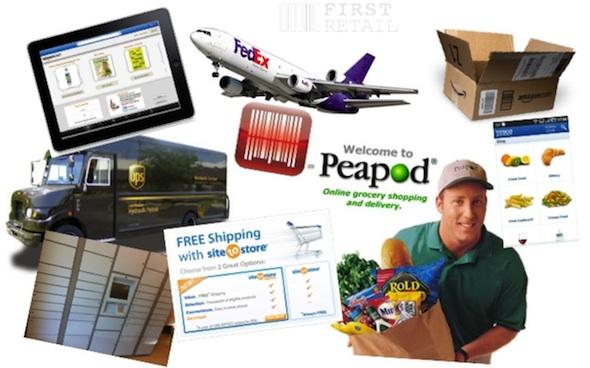Multi-channel – Stores, Online, Mobile and More

In 1999 I worked on a strategy to monetize interactive TV via a retailing proposition – this was expanded this to demonstrate a multi-channel concept with three pillars: Selection; Order; Fulfillment. Twelve years on this is reality with smart phones, tablets, streamed content and the full complement of retail fulfillment infrastructure. What is now lacking is the deep integration of those three pillars into a truly multi-channel enterprise.
The integration is currently at an early stage: A high proportion of traditional retailers have now created online stores, a few allow their customers to pick up in store. Some online stores have mobile interfaces, a few allow the customer to order and pay online. Some online retailers have marketplaces where 3rd party vendors can sell their goods, a few allow those goods to be picked up at a physical store. Some retailers are able to take foreign credit card payments, a few are able to fulfill abroad.
When considering ‘multichannel’ each retailer will have unique objectives, some examples:
- using online to reach a geography currently not served by physical stores – to enter new markets nationally or internationally
- using online to increase the available assortment to customers – to move into new categories or to increase sales
- to use an existing physical distribution network to increase shipping margins – to compete with high volume pure-plays
- to leverage mobile social media for a real-time shopping experience coupled to online or kiosk based ordering and in-store fulfillment – to remove friction in the user experience
To truly wring the benefits from the multi-channel experience will require:
- strategic retail thinking for an effective combination
- tactical experience of how that integration will work in the real-world
- to devise a set of performance metrics that will optimize processes and behaviors across what have been disparate activities for most organizations
Strategic View of Multi-Channel
Last week’s headline in Business Insider, ‘Best Buy, Target and Wal-Mart are Showrooms for Amazon articulated a known truth. For the bricks and mortar operators this is a hard pill to swallow, but for Amazon, how many sales can be credited to a physical browse experience? I would regularly visit my local Borders, then buy on Amazon – I am certain my book purchases reduced when that branch of Borders closed down. The Multi-Channel retailer needs to provide some benefit that results from the store experience. BestBuy is increasing its customer service proposition and providing the consumer with more information through kiosks and mobile applications.
Multi-Channel Integration
In addition to back end integration the multi-channel retailer needs to ensure a consistency of experience in all of it’s aspects across the various channel. A May 2010 McKinsey report entitled The Value Proposition In MultiChannel Retailing discusses the price-value equation as to how customers perceive the a retailers proposition across channels. As the barriers to a switch have been reduced to almost zero by services such as Red Laser and PriceTector, the retailer’s value proposition is key – the notion of ‘abandonment’ as a KPI is going to make its way from the online checkout to the physical store as customers walk out the door because of a better offer online or in another store.
Integrated Performance Metrics
A retailer has an existing network of stores in a region and is looking to lower shipping costs for their online proposition while simultaneously trying to increase the assortment available to the store shopper by providing in-store kiosks. The store assortment is 50,000 SKUs and the online assortment is 500,000 SKUs. Separately both operations will track cost per item of delivery to store and order value and frequency. Now there will be three types of item: those available in-store only, those available online only and those available online and in store. While the online proportion is small, the retailer is able to leverage space on trucks if the store and online assortment are fulfilled from the same distribution facilities. However, if the online portion is significant, the shipping costs will increase for all items going to those stores. If the online and store operations have different distribution networks, then these might need to be re-balanced to reduce the number of packages. In this and other blended cases, the metrics and targets should be revised to optimize the whole rather than the parts.
Forecast Emergence in Mainstream: 2012 – Retailers that remember to place the consumer at the heart of their proposition design will be the ones that shine. Remember, about multi-channel – it’s not a site, it’s an experience and customers will not interact, they will participate.
Next post in this series of five: Global Markets – When Supply and Demand Move Offshore
Previous post in this series of five: Business to Individual, the maturing of VRM
Main post of the series: Retail Trends – Main
Things I read to get here
Multichannel
- Preparing the iPad for frictionless retailing on RealTea.net 2010
- Various papers on Multi-Channel Retail Week, Financial Times European Retail Analyst and DiRECT retail models, 1999
- Best Buy tries another strategy to entice shoppers

